Now that it’s official, we have an exciting announcement. We have been offered a residency at Leichtag Foundation’s Barn 8 art space, overlooking the scenic Coastal Roots Farm. While we continue to search for a site of our very own, Barn 8 will serve as our temporary base of operations for running a series of educational pilot programs around art and agriculture.
Whether it’s poetry, art, or cultivating food, we human-types seem to require the activity of bringing something into the world that did not exist before.
At places like Barn 8, the link between art and agriculture is re-emerging as an intuitive pairing. Historically, food has been a form of cultural expression as an essential element to rituals and festivities. And creativity is the spine of culture. If Terra Cultura intends to cultivate a thriving and resilient culture around environmental stewardship and sustainable living, then we will need to cultivate both food and creativity. It is agri-culture after all. The word agriculture stems from the Latin root for cultivate or grow. The word poiesis, from which we derive the word poetry, comes from the Greek term for to make. Whether it’s poetry, art, or cultivating food, we human-types seem to require the activity of bringing something into the world that did not exist before. What has struck Jessica, Travis and I throughout our careers in both artistic and agricultural fields, is how the processes of making things tends to form communities around them. But for those communities to endure beyond the duration of any given project, the projects must perpetuate investment in a place.
Jessica, Travis and I all moved to Ditmas Park, Brooklyn NYC in 2008 and were welcomed into a community that evolved around a place called Vox Pop. Vox Pop was a café, bar, bookstore, music venue and community hub. Since we all lived in such tiny spaces, Vox Pop became the neighborhood’s de facto living room, that would stay open as late as anyone cared to hang around. Vox Pop was a blank slate for community projects: at Vox Pop Travis performed his music, I produced and directed plays that Jessica acted in, our friends screened their films, sold their art, held community organizing meetings, painted murals, lead children’s music classes and taught workshops. When Vox Pop hit financial trouble, the community bought shares to try to bolster it. But eventually it went the way of many ragtag art and community spaces. After Vox Pop closed its doors, the community lost its gathering place, and the neighborhood hasn’t been the same since.
At Terra Cultura, we grow food to nourish bodies, nourish artists to feed hearts and minds, and cultivate community as a foundation of support.
Jess and Trav and I started talking about creating a place to foster community and collaboration in the way Vox Pop had, but sustainably. We envisioned a place where the projects we collaborated on would be enjoyed for many generations to come. In our often displaced and isolated society, place-based, meaningful collaborations can fill a void left by modern living.
Around the time that Vox Pop closed, Jessica and Travis devoted a year to traveling the globe and learning different agricultural practices on organic farms and eco-villages on almost every continent. Meanwhile, I was falling in love with urban gardening and the community around it in Brooklyn. We realized that we needed to start an Art Farm. We saw a need for a place where solid community foundations would be built through collaborative, creative projects that nourished both bodies and minds, while benefiting the environment.
As in the case of Vox Pop, many communities are losing their gathering places. In many cities, studio space is becoming prohibitively expensive. We feel very fortunate that Leichtag Foundation has offered us such a beautiful space as a playground to test out our ideas for weaving together art, agriculture, education, community and environmental stewardship.
Once Terra Cultura has its own site it will offer facilities and resources to creative thinkers and change-makers from all disciplines through its artist-in-residence program. In exchange, artists in our residency program will lead art classes and workshops for the local community. Providing a venue for cultural exchange of ideas and knowledge is one of Terra Cultura’s core objectives. We believe (and the California Arts Council agrees) that access to the arts offers tremendous intrinsic benefits, and is a vital component of a community’s overall health and wellbeing. Terra Cultura will host public arts and performance events, featuring both local artists, as well as artists from diverse cultural backgrounds, which are open and accessible to all.
Work in the field and in the studio can be laborious and lonely. But neither food cultivation nor creative generation exists in a vacuum. Artists and agriculturalists require local social support systems for navigating the challenges and joys of their labor. At Terra Cultura, we grow food to nourish bodies, nourish artists to feed hearts and minds, and cultivate community as a foundation of support. By welcoming diverse and unique emerging perspectives in agriculture and art, we hope to instigate innovative cross-collaborations. In bringing together creative innovators across disciplines, we hope to spark real solutions to the current societal and environmental challenges we face. In the meantime, we’ll get started by keeping you posted on our programs and events at our new Barn 8 home at Leichtag Foundation. See you there!


This all sounds so great. I love the sentence: At Terra Cultura, we grow food to nourish bodies, nourish artists to feed hearts and minds, and cultivate community as a foundation of support. By welcoming diverse and unique emerging perspectives in agriculture and art, we hope to instigate innovative cross-collaborations. In bringing together creative innovators across disciplines, we hope to spark real solutions to the current societal and environmental challenges we face.” Great essay and a wonderful explanation of what you are working on.